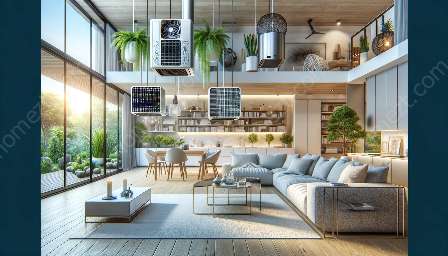Good ventilation is a crucial aspect of creating a healthy and comfortable indoor environment. It plays a vital role in maintaining indoor air quality and supporting intelligent home design. In this comprehensive guide, we will delve into the significance of good ventilation, its impact on indoor air quality, and how it integrates with modern ventilation systems and intelligent home design.
Understanding the Importance of Good Ventilation
Good ventilation refers to the process of circulating fresh air into a space while removing stale air, pollutants, and moisture. This exchange of air is essential for maintaining a healthy indoor environment and ensuring optimal air quality.
Proper ventilation helps to reduce indoor air pollutants, such as volatile organic compounds (VOCs), mold, and other allergens, which can have detrimental effects on health. It also regulates humidity levels, preventing the buildup of moisture that can lead to mold growth and structural damage.
Moreover, good ventilation is instrumental in controlling odors and preventing the accumulation of indoor air pollutants, thereby creating a more pleasant living environment.
Impact of Good Ventilation on Indoor Air Quality
The quality of indoor air has a profound impact on the health and well-being of occupants. Poor ventilation can lead to a buildup of contaminants, resulting in respiratory issues, allergies, and other health problems. Adequate ventilation, on the other hand, helps to minimize these risks by ensuring the circulation of clean, fresh air throughout the living space.
By effectively removing indoor pollutants and maintaining proper air circulation, good ventilation contributes to a healthier indoor environment. This is particularly important for individuals who suffer from respiratory conditions or allergies, as well as for promoting overall well-being and comfort within the home.
Integrating Ventilation Systems into Intelligent Home Design
With the advancement of technology, modern ventilation systems have become an integral part of intelligent home design. These systems are designed to optimize indoor air quality, energy efficiency, and overall comfort within the home.
Intelligent home designs incorporate ventilation systems that are tailored to the specific needs of the living space, considering factors such as building orientation, natural airflow patterns, and energy conservation. By integrating ventilation systems into the overall design of a home, occupants can enjoy a healthier and more comfortable living environment.
The Benefits of Incorporating Ventilation Systems
There are numerous benefits to integrating ventilation systems into intelligent home designs. These include:
- Improved Indoor Air Quality: Ventilation systems help to reduce indoor pollutants and maintain a healthier indoor environment.
- Energy Efficiency: Modern ventilation systems are designed to optimize energy usage, contributing to overall efficiency and sustainability.
- Comfort and Well-being: Proper ventilation enhances the comfort and well-being of occupants by promoting clean and fresh indoor air.
- Moisture Control: Ventilation systems aid in controlling humidity levels, preventing moisture-related issues such as mold and mildew.
Overall, the integration of ventilation systems into intelligent home design offers numerous advantages that contribute to a healthier, more sustainable living environment.
The Role of Ventilation in Creating a Healthy Living Environment
Good ventilation is essential for cultivating a healthy living environment. It not only improves indoor air quality and removes pollutants but also plays a key role in creating a comfortable and welcoming atmosphere within the home. By considering the importance of good ventilation and integrating modern ventilation systems into intelligent home designs, homeowners can elevate the quality of their living spaces while prioritizing the well-being of occupants.
}}}}

